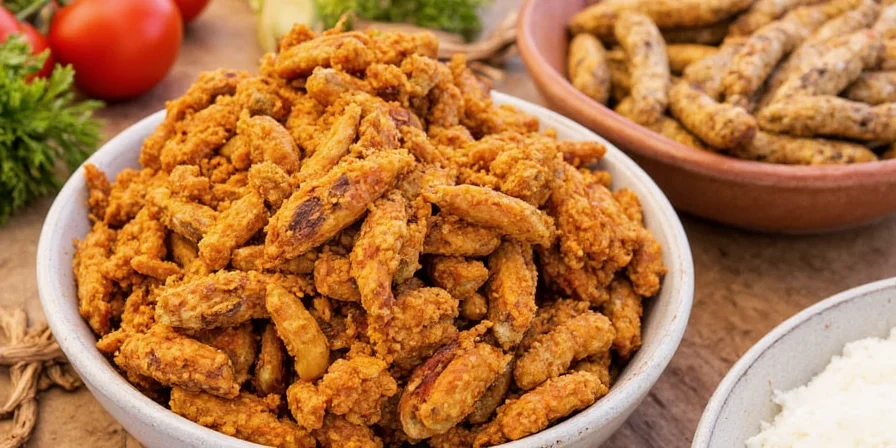Ginger and Thai Spice: A Spicy Symphony of Flavor and Culture
Imagine biting into a dish that instantly ignites your taste buds, warms your soul, and transports you to the bustling street markets of Bangkok. That’s the magic of ginger-like Thai spices! In this blog post, we’ll dive deep into the world of these fiery and fragrant ingredients, exploring their origins, culinary uses, health benefits, and cultural significance.
Table of Contents
- Introduction to Ginger-Like Thai Spices
- Ginger vs. Thai-Style Ginger Spices
- Top 5 Thai Dishes with Ginger-Style Flavors
- How to Use Ginger-Like Thai Spices in Your Kitchen
- Health Benefits of Ginger and Its Thai Cousins
- Spice Comparison Table
- Fun Cultural Facts About Thai Spices
- Pro Tips for Home Cooks & Spice Lovers
- Conclusion
Introduction to Ginger-Like Thai Spices
When we talk about “ginger-like Thai spices,” we’re not always referring to ginger itself. Thai cuisine has developed its own unique array of spices and herbs that mimic or enhance the warming, earthy flavor of ginger. From galangal to kaffir lime leaves, lemongrass to fingerroot (krachai), these ingredients play a starring role in Thai dishes around the globe.

Ginger vs. Thai-Style Ginger Spices
Although they look similar and share some flavor notes, ginger and its Thai cousins are quite different:
- Ginger: Zingiber officinale; sharp, spicy-sweet, commonly used worldwide.
- Galangal: Alpinia galanga; more pungent, woody, and peppery than ginger.
- Fingerroot (Krachai): Boesenbergia rotunda; citrusy and mild, often used fresh.
- Lemongrass: Cymbopogon citratus; lemony aroma, adds brightness rather than heat.
Top 5 Thai Dishes with Ginger-Style Flavors
Here are five Thai dishes where ginger-like flavors shine:
- Tom Kha Gai – Chicken soup with coconut milk, galangal, and kaffir lime leaves.
- Pad Thai with Krachai – Stir-fried noodles enhanced with the zesty kick of fingerroot.
- Green Curry (Gaeng Keow Wan) – Often includes galangal and lemongrass for depth.
- Khao Soi – Northern Thai coconut curry noodle soup with galangal undertones.
- Grilled Fish with Galangal and Lemongrass – Fragrant fish dish wrapped in banana leaves.
How to Use Ginger-Like Thai Spices in Your Kitchen
Ready to bring a little Bangkok to your kitchen? Here are practical ways to incorporate these spices into everyday cooking:
- Use galangal instead of ginger in soups and stews for a sharper, more aromatic base.
- Infuse oils or broths with lemongrass for a bright, refreshing note.
- Chop fingerroot finely and add it to stir-fries or dips for a subtle, citrusy punch.
- Simmer kaffir lime leaves with galangal and coconut milk for an authentic Thai flavor base.
- Store dried versions of these spices in air-tight containers to extend shelf life.
Health Benefits of Ginger and Its Thai Cousins
Beyond flavor, these spices offer real health perks:
- Ginger: Anti-inflammatory, aids digestion, helps with nausea.
- Galangal: Rich in antioxidants, may boost immunity and reduce inflammation.
- Lemongrass: Contains citral, which may help lower cholesterol and anxiety.
- Krachai: Used traditionally to improve digestion and treat cold symptoms.
Spice Comparison Table
| Spice | Flavor Profile | Best For | Substitute Option |
|---|---|---|---|
| Ginger | Spicy, sweet, earthy | General Asian dishes, baking, tea | Mild galangal or grated nutmeg |
| Galangal | Woody, peppery, sharp | Thai soups, curries, grilled meats | Ginger + a pinch of white pepper |
| Lemongrass | Citrusy, herbal, floral | Broths, marinades, teas | Lemon zest + mint |
| Krachai (Fingerroot) | Citrusy, mild spice | Stir-fries, dipping sauces, salads | Ginger + a touch of turmeric |
Fun Cultural Facts About Thai Spices
Did you know that Thai food culture revolves around balancing five key flavors — sweet, salty, sour, bitter, and spicy? Ginger-like spices often serve as the backbone of the spicy component. Here are some quick facts:
- Thai markets sell fresh galangal bundles next to chili pastes every morning.
- In traditional medicine, krachai is believed to boost energy and vitality.
- The word “lemongrass” comes from its lemony scent, though it’s not related to citrus fruits.
- In Thailand, using whole stalks of lemongrass in soup means “to welcome good fortune.”
- Some hill tribes use fingerroot as a natural mosquito repellent!
Pro Tips for Home Cooks & Spice Lovers
- Buy fresh whenever possible — dried forms lack vibrancy.
- Toast galangal lightly before grinding to intensify flavor.
- Don’t overdo fingerroot — its potency can overpower milder dishes.
- Pair with coconut milk to balance out spiciness and create depth.
- Label your spice jars clearly — many Thai spices look alike but taste very different!
Conclusion
From galangal to fingerroot, the world of Thai spices offers a rich palette of flavors that go beyond the typical ginger we’re all familiar with. Whether you're looking to elevate your home cooking or simply explore new tastes, diving into these ginger-like Thai spices is a flavorful journey worth taking.
So next time you reach for that jar of ginger on your shelf, consider swapping it out for a bold, fragrant alternative from Thailand. Your taste buds — and maybe even your immune system — will thank you!










 浙公网安备
33010002000092号
浙公网安备
33010002000092号 浙B2-20120091-4
浙B2-20120091-4